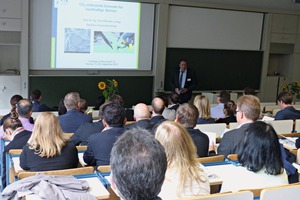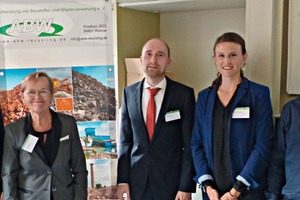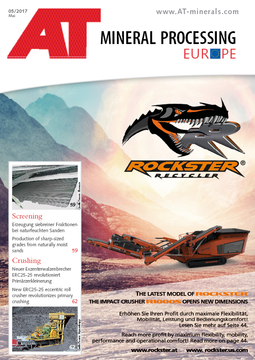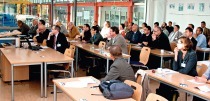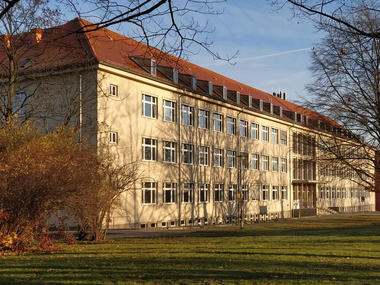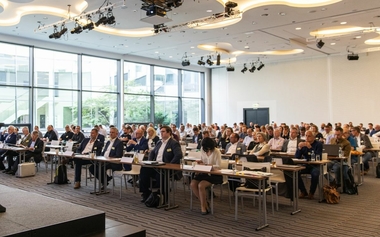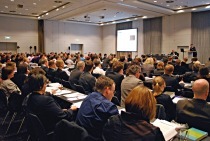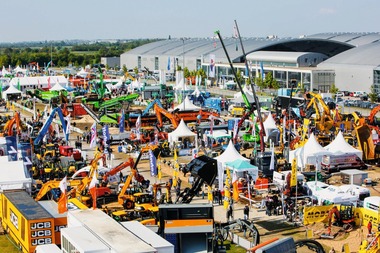Meeting of recycling experts in Weimar
From 19. to 20.09.2016, over 60 recycling experts from research and industry met at the conference organized by the FIB, the F.A. Finger Institute of Construction Materials and the ABW, the “Association of Construction Materials and Recycling Regd.” to find out about the latest trends and exchange information. The conference held for the eighth time focussed on recycling construction waste and, associated with this, the development of sustainable construction materials.
After some introductory words, Prof.-Ing. Horst-Michael Ludwig opened the conference with a paper on “CO2-reduced cements for sustainable concrete”. The deacidification of the limestone alone makes up 70 % of the CO2 formed during the production of cement. For this reason, cement manufacturers are making considerable efforts to find practicable possibilities for CO2 reduction. With the use of fly ash, foundry sand and limestone flour, it is possible to reduce the proportion of clinker. The search is underway to find other substances that can be used in cement – as well as for potential low-CO2 binders. “Particular attention should be given to the durability of novel binders in use as bulk cement,” emphasizes Prof. Ludwig.
This was followed by presentation of the “Award for Young Construction Material Recycling Researchers”. First place went to Anna-Lena Höhn M.Sc., Fraunhofer-Institute for Building Physics (IBP) Stuttgart, for her Master thesis on the topic “Using recycled concrete for the production of aerated concrete”. Awarded joint second place were the Master theses of Stephan Dose M.Sc., Bauhaus-University of Weimar, for his work “Influence of recycled, carbonated aggregate on the fresh and hardened concrete properties of recycled concrete” and Stephanie Grümer M.Sc., HCU Hamburg, REAP University for her Master thesis “Economical and sustainable benefits of recyclable building materials in comparison to conventional building materials”.
Material streams
This programme session was opened by Dr.-Ing. habil. Regine Ortlepp from Leibniz Institute of Ecological Urban and Regional Development in Dresden with the paper “Mapping of the anthropogenic material reserves in Germany for optimization of the secondary resources sector”. For the material flow, technical infrastructures (civil engineering), building structures, building services and durable goods, like, for example, domestic appliances, home electronics, were analysed. As a result of this project, a systematic record and estimation of the volume and composition of the anthropogenic material reserves is available. With these insights, urban mining can be brought forward in the sense of a recycling economy.
The following papers were devoted to urban mining and recycling economy. A case study from Vienna on urban mining was presented by Dipl.-Ing. Fritz Kleemann from Vienna University of Technology.
Christian Stier M.Sc. from the Fraunhofer Institute for Chemical Technology, Pfinztal, presented within the framework of the Resource-App project a demonstrator that can determine the raw materials inventory of a scanned building in real time, compile this information and forward this selectively so that machine operator and machines can undertake the deconstruction of buildings for the optimization of resources.
Magdalena Zabek M.Sc. analysed in her paper “Construction recycling economy in Rhenish mining area” the protagonists who are crucial for the development of a recycling-oriented construction industry as well as their interaction.
The issues remaining unresolved during the day could be discussed at length during the evening function in Dorint Hotel Weimar and new contacts made.
Sorting
The second day of talks focussed on sorting – a technology of great importance for recycling. In her work “Sensor-assisted sorting of mineral construction and demolition waste”, Dr.-Ing. Elske Linss from the Bauhaus University of Weimar investigated VIS- and NIR spectra for the identification of construction waste components and attested great potential for both methods.
Dr. Andrea Karrasch addressed in her paper “Construction waste recycling and rock sorting with near-infrared hyperspectral cameras” with NIR spectroscopic analyses of construction materials. Gypsum, lime-sandstone, aerated concrete, concrete and clay brick could be successfully detected.
“Optical computing for material-selective sorting of fine-grained construction waste” was the title of the final paper presented by Prof. Dr.-Ing. Thomas Längle from Fraunhofer Institute of Optronics System Technologies in Karlsruhe. Here a technology was presented in which sorting for particle sizes < 2 mm is also possible. Used were a high-resolution and rapid line camera and the optical computing method.
Concretes and masonry construction materials, gypsum
The two following topics “Concretes and masonry construction materials” and “Gypsum” not only address the recycling of the above-mentioned construction materials, but also various possibilities for sensible use of secondary resources.
Dipl.-Ing. Raymund Böing, HeidelbergCement AG, presented in his paper “Resource-saving concrete – material for the next generation” the initial situation for recycled aggregates as well as research projects, companies and institutes involved with R‑concrete.
The other papers addressed recycled concretes, the properties of crushed sands and the recyclability of ashes.
The programme was concluded with the topic of gypsum recycling. In construction material recycling, it is important, on account of the undesirable influences of gypsum plaster, to recycle construction waste and gypsum separately. But the recycling of plaster board was also a subject for discussion.
The two-day event concluded with the paper by Prof. Dr.-Ing. habil. Anette Müller, ABW e.V. on the subject “Recycling technologies – review and outlook”. Her conclusion – owing to the over emphasis on the pollutant aspect at the expense of technology and product developments, the recycling of construction waste has made hardly any progress in 20 years. As a future path to effective construction material recycling, Prof. Müller saw selective funding of research and development as well as (limited) funding for the production and application of recycled construction materials.
The 9th Conference on Recycling is planned for autumn 2019.

